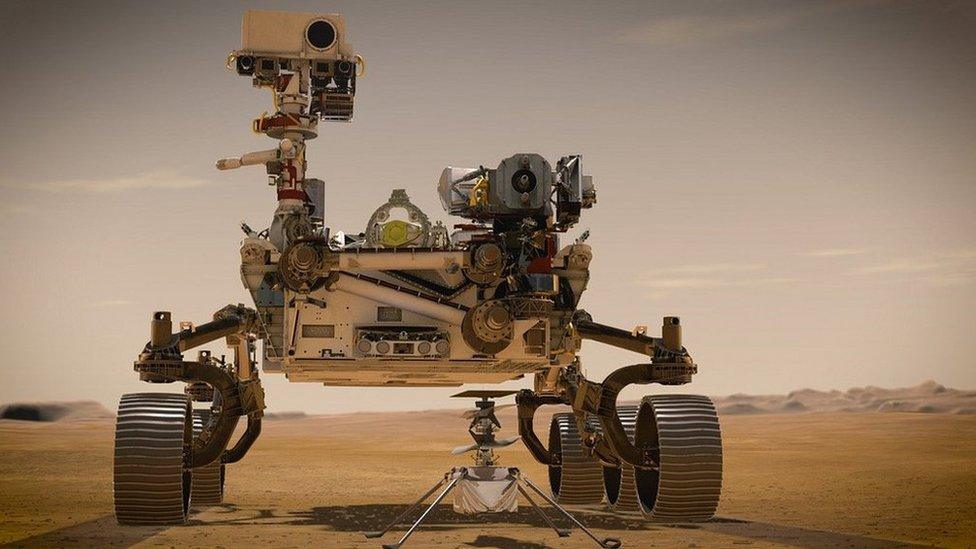Nasa: Perseverance and Ingenuity celebrate a year on Mars!
- Published
- comments

Perseverance and Ingenuity are celebrating a year of exploring Mars!
Nasa's Perseverance rover, and Ingenuity helicopter are celebrating a year of exploring Mars.
The two robots blasted off into space on 30 July 2020, and people all over the world tuned in to watch them land on the red planet just over six months later on 18 February 2021.
Since then the two robots have been busy improving our knowledge of the mysterious planet and breaking all kinds of records in the process!
But just what have these two robots been up to in the last year? Take a look below to find out!
Perseverance and Ingenuity's year of achievements
Since its arrival on the red planet, Perseverance has clocked up almost 4,000 metres of exploring, and recently broke the record for the most distance travelled by a Mars rover in a single day, journeying almost 320 metres on 14 February 2022.
Perseverance has also been busy collecting the first ever rock samples of Mars' surface.
So far the rover has been collecting samples from the Jezero Crater using a drill on the end of its arm and storing them in special canisters to protect them.
The rover was also able to extract enough oxygen from the air for a human to breathe for around 10 minutes!
Perseverance has also been a home for the ingenuity helicopter which made history last year by being the first ever helicopter to fly on Mars.
It has been scouting ahead of Perseverance and helping the robot to navigate its way on the ground. Now that's teamwork!
"One year ago, Perseverance touched down at Jezero Crater and began its journey on Mars. Since then, this innovative rover has inspired humanity and accomplished a series of firsts, from transmitting the first audio recording of sounds from Mars, to capturing the Ingenuity helicopter's history making first powered, controlled flight on another planet, to producing oxygen on Mars for the first time ever with the MOXIE experiment," said NASA Administrator Bill Nelson in a statement.
What's next for the robots?
Perseverance's mission will last around two Earth years, and during that time it will continue to collect samples from the surface of Mars.
In around four years a second, smaller rover being built by the European Space Agency (Esa), will arrive on Mars.
This rover will travel across the surface picking up the sample canisters left behind by Perseverance.
The canisters will then be loaded into a protective container and placed into a small rocket which will blast into the sky, and be met in orbit and caught by a European satellite.
This satellite will will then bring the precious rock and soil samples back to Earth, but it won't arrive until at least 2031!
"When the Martian samples come back in the 2030s, very likely the scientists to study these will be the students who are in school right now." said Briony Horgan, a scientist on the Perseverance mission.
- Published22 February 2021
- Published11 March 2021
- Published6 March 2021
